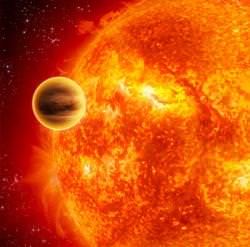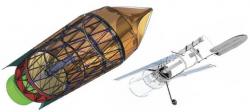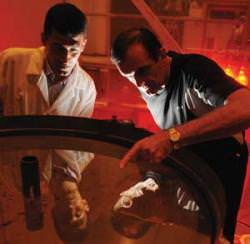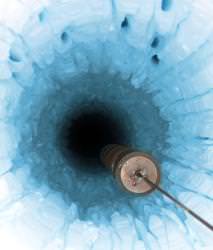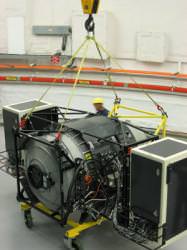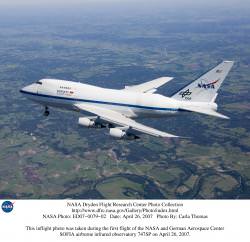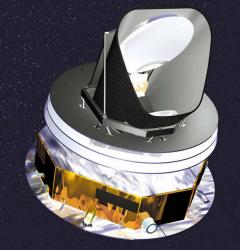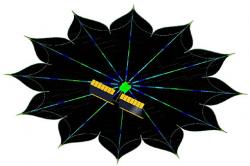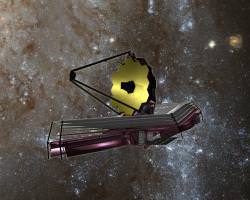Scientists have reported the first conclusive evidence of water vapour in the atmosphere of an extrasolar planet. Before we load up the spaceships to search for life, however, consider the fact that this planet, HD 189733b, is larger than Jupiter, and orbits its parent star in just 2.2 days. That’s hot hot water.
The discovery was made using the mighty Spitzer space telescope. The astronomers pointed Spitzer at the parent star, and measured the chemical consistency of its light as the planet passed in front – aka, transited. As the starlight dimmed – blocked by the planet – the chemical constituents of the star changed to show a distinctive pattern. Astronomers know that only water can absorb these specific wavelengths of infrared radiation.
As I mentioned above, this planet is certainly a “hot Jupiter”. It contains 1.15 the mass of Jupiter (and 1.25 the diameter), but it orbits its parent star at a distance of only 4.5 million km. In comparison, our own Mercury is a distant 70 million km from the Sun.
It’s close, so it’s hot. Its atmospheric temperature is about 1000 Kelvin (more than 700 C). With this heat, all the water vapour in its atmosphere can’t condense, rain or form clouds.
It’s also tidally locked to its parent star, only showing one face to the star at all times (like the Moon and the Earth). This constant facing probably generates fierce winds that sweep around the planet from the day side to the night side.
Like I said, not the best place to find life, but still, an amazing discovery.
Original Source:ESA News Release

